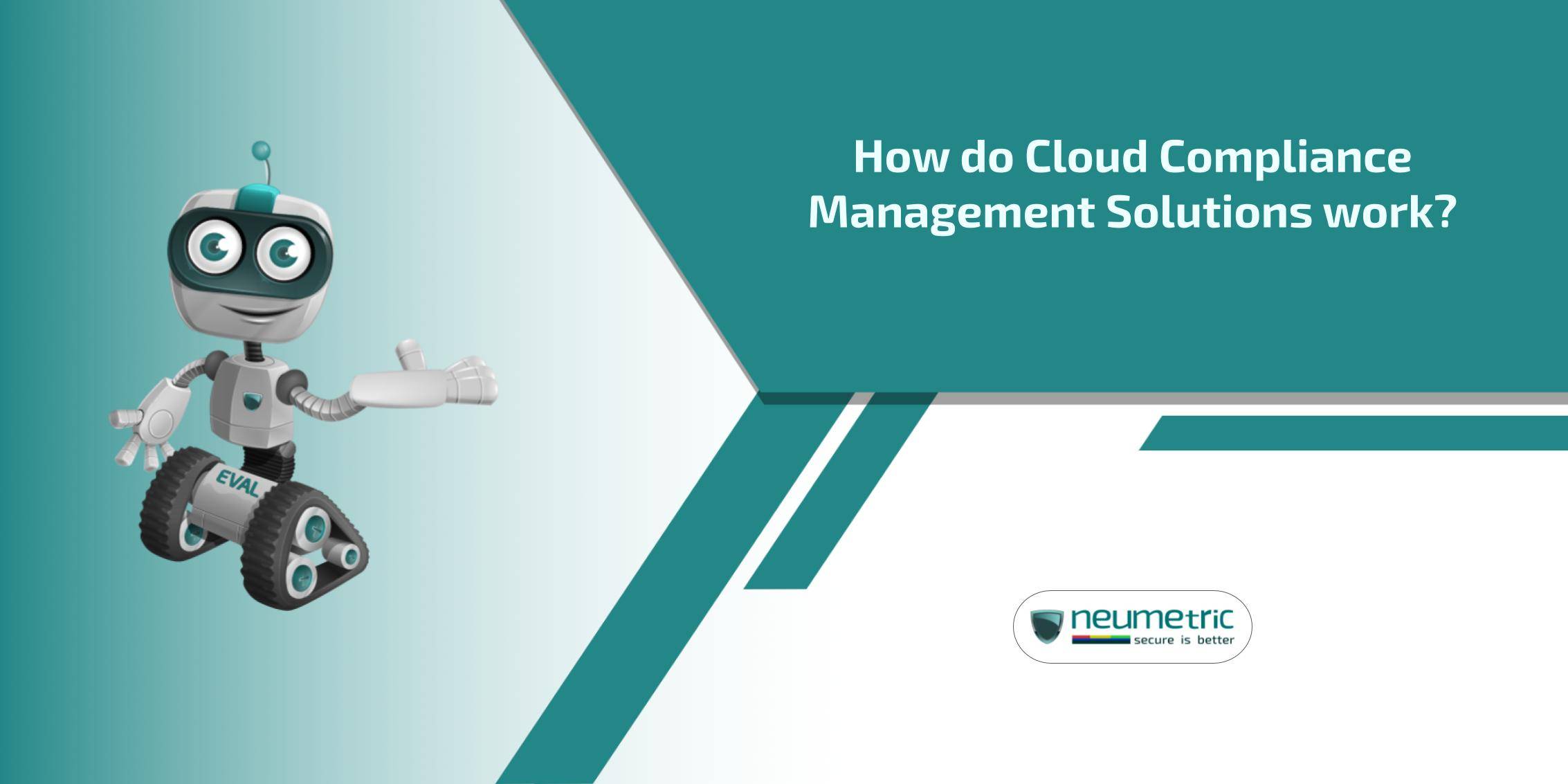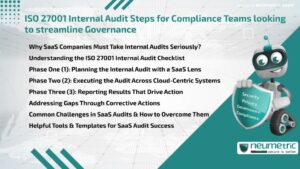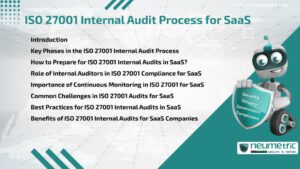Table of Contents
ToggleHow do Cloud Compliance Management Solutions work?
Introduction
Cloud computing has transformed how organizations store, access & process data by enabling convenient on-demand access to shared computing resources over the internet. The flexibility, scalability & cost savings promised by the cloud have fueled rapid adoption across industries. However, as sensitive data & mission-critical workloads migrate to the cloud, compliance & security have become primary concerns.
While the cloud introduces efficiencies, it also brings new risks & compliance obligations related to data sovereignty, privacy & industry-specific regulations. Non-compliance can result in steep fines, damage to brand reputation & loss of customer trust.
Cloud Compliance Management solutions provide integrated capabilities for organizations to continuously assess risk, monitor cloud resources, enforce security policies & take corrective actions helping them demonstrate compliance at all times. By leveraging automation & analytics, these solutions simplify compliance management across complex & dynamic cloud environments.
Understanding Cloud Compliance
Cloud compliance refers to the set of internal policies & external regulations that govern security, privacy & operational integrity in the cloud. It aims to ensure that an organization’s use of cloud services & infrastructure is in alignment with applicable legal, industry-specific & contractual obligations.
Maintaining compliance provides assurance to key stakeholders from customers & partners to regulators that an organization is a trusted custodian of data & upholds highest standards for data protection regardless of the environment.
Key compliance standards & regulations
- General Data Protection Regulation [GDPR] regulates data protection & privacy for European Union [EU] individuals. Imposes strict requirements around data handling & breach notification.
- Health Insurance Portability & Accountability Act [HIPAA] governs patient health data privacy & security for healthcare organizations in the US. Sets standards for protection of sensitive patient information.
- PCI Data Security Standard [PCI DSS] applies to all entities handling credit cardholder information. Focuses on data security measures for handling financial transactions.
- Sarbanes Oxley [SOX] aimed at public companies to mandate financial reporting integrity & internal financial controls. Requires audit trails on access & changes to financial data.
Along with these, numerous industry-specific & regional regulations exist, making cloud compliance highly complex. Staying updated & demonstrating compliance is a continuous challenge.
Challenges of maintaining compliance in the cloud
- Multi-cloud & hybrid cloud environments make it difficult to maintain visibility & cohesive control across the vastly distributed IT ecosystem spanning cloud & on-premises infrastructure.
- The shared responsibility model of cloud shifts certain compliance obligations like physical security fully to the customer while others are managed by the cloud provider. Understanding areas of responsibility is key.
- Cloud infrastructure & services keep evolving rapidly. Continuously evaluating new services & deployment models for risks & updating controls is an uphill task.
- With agile development & faster release cycles, putting robust controls & checks early in SDLC has become critical but difficult to achieve consistently.
Components of Cloud Compliance Management Solutions
Automated risk assessment
- Role of risk assessment in compliance: Identifying & analyzing risks that can impact compliance forms the foundation of an effective compliance strategy, highlighting areas that require controls & enable risk-based prioritization. However, traditional manual assessments struggle to keep pace with the scale & velocity of change in cloud environments.
- How automation enhances accuracy & efficiency: Automated cloud-native risk assessment solutions continuously collect infrastructure & config data, identify risks through customized rulesets & algorithms, accurately pinpoint areas of non-compliance & enable benchmarking against baselines & frameworks significantly enhancing speed, accuracy & coverage compared to manual reviews. Ongoing assessments & exception-based reporting provide assurance that compliance controls are working as intended.
Continuous monitoring
- Importance of real-time monitoring: While periodic assessments provide point-in-time visibility, continuous monitoring enables organizations to keep up with cloud dynamics in real time, detecting compliance risks & threats early so they can be addressed quickly. Ongoing monitoring is thus crucial for organizations to rapidly detect & respond to issues before they escalate into incidents.
- Technologies used for continuous monitoring: Modern compliance solutions leverage various technologies to enable automation & provide real-time monitoring at cloud speed & scale including Artificial Intelligence [AI] & Machine Learning [ML] based anomaly detection that flags deviations from baseline to catch issues early; APIs & integrations with cloud platforms to ingest events & changes; query engines to analyze event data; & advanced analytics that contextualize & prioritize risks.
Policy enforcement & remediation
- Implementing & enforcing policies: Hardening cloud environments through technical controls & policies that align with compliance frameworks is essential to mitigate risks proactively. Robust policy engines that enable easy definition, automated propagation & continuous validation of compliance policies serve to embed security best practices within the organization’s cloud architecture.
- Automated remediation processes: Upon detecting configuration issues or unpatched threats that violate defined policies, advanced Cloud Compliance solutions can either auto-remediate violations immediately or generate actionable alerts for security teams to resolve risks in a timely manner with reduced effort. Quick remediation limits exposure & aims to prevent risks from materializing into incidents.
Key Features of Cloud Compliance Management Solutions
Data encryption & tokenization
- Role in protecting sensitive information: Encrypting data & utilizing tokenization protects sensitive information by transforming plain text data into coded form. This limits exposure in case of unauthorized access or data leaks, helping meet privacy & industry compliance regulations related to protection of customer, financial, healthcare & other forms of confidential data.
- Encryption methods & tokenization techniques: Solutions leverage robust encryption algorithms like AES-256 bit & mechanisms like transparent data encryption to encrypt data at rest as well as in transit across cloud environments & hybrid ecosystems. Format preserving tokenization further anonymizes sensitive fields in databases & applications by substituting original values with tokens or pseudonyms on a 1:1 mapping without changing application logic.
Access controls & identity management
- Importance of controlling access: Data breaches often result from compromised identities & excessive user privileges allowing unauthorized access. Implementing the principles of least privilege & zero trust access are imperative for cloud security. Solutions provide capabilities for granular Role-Based Access Control [RBAC], Multi-Factor Authentication [MFA], Single Sign-On [SSO], just-in-time privileged access & more.
- Implementing robust identity management systems: AI-powered user behavior analytics, lifecycle management capabilities, governance features & seamless integrations with cloud-based identity systems strengthen identification, authentication & authorization while eliminating risks related to excessive permissions, inactive users & privileged credential misuse.
Audit trails & reporting
- Generating comprehensive audit trails: Recording system events & changes in immutable audit logs provides visibility into security-related cloud activity while serving as forensic evidence during compliance audits. By gathering event feeds across services, solutions create a contextual audit trail that demonstrates compliance controls are functioning effectively.
- Reporting mechanisms for compliance documentation: Compliance solutions simplify audit preparation by providing pre-configured reports mapping security controls & organizational practices to compliance frameworks as well as on-demand custom reporting. Dashboards give security leads & senior management an at-a-glance view into compliance posture.
Integration with Cloud Service Providers
- Compatibility with major cloud platforms: Leading compliance solutions integrate natively with widely adopted cloud platforms like AWS, Microsoft Azure & Google Cloud Platform [GCP] to maximize risk coverage across complex & heterogeneous cloud environments encompassing Software-as-a-Service [SaaS] apps, Infrastructure-as-a-Service [IaaS], Platform-as-a-Service [PaaS], containers & serverless resources.
- Leveraging native cloud security features: By leveraging proprietary telemetry within cloud platforms & normalizing data from native security services like AWS GuardDuty, Azure Defender & GCP Security Command Center, solutions gain broader visibility & detect policy violations across domains filling visibility gaps, reducing tool sprawl & costs.
- Challenges & solutions in multi-cloud environments: Governing security, compliance & operations consistently across multi-cloud presents key challenges like visibility gaps arising from platform disparities, lack of cohesive access controls & risk from misconfigurations. Solutions address these through unified policy definition & reporting, centralized identity & access governance & automation capabilities that operate reliably regardless of differences between underlying cloud platforms.
Future Trends in Cloud Compliance Management
Emerging technologies in compliance management: Incorporating cutting-edge technologies like advanced threat intelligence, natural language processing & process automation using RPA hold promise for the future of compliance by enabling real-time detection of external threats, simplifying unstructured audit data analysis & speeding up repetitive compliance processes respectively.
Evolving compliance standards: As data privacy regulations tighten & new industry standards emerge, compliance management solutions will need to continuously assess & adapt controls to address changing mandates around security, transparency & accountability especially across geographical boundaries.
Anticipated advancements in cloud security: Future innovations in cloud security like decentralized identity management using blockchain, Confidential Computing for secure enclaves & adoption of technologies like software defined perimeters & zero trust access will raise the bar for compliance solutions to align with & capitalize on advances in protection, visibility & control across intrinsically complex cloud environments.
Conclusion
Migrating business-critical workloads to the cloud while maintaining compliance with continuously evolving legal & industry mandates is crucial but fraught with challenges for modern enterprises. Cloud Compliance Management solutions greatly simplify this through native integrations, automation & analytical capabilities purpose-built for the cloud scale & context enabling organizations to effectively meet compliance needs as a natural by-product of their cloud security strategy.
By providing comprehensive visibility, continuous controls & assurance around meeting the most stringent compliance standards governing data security & privacy, these solutions enable companies to fully realize the operational & economic benefits promised by the cloud to drive innovation & gain competitive advantage confidently.
As data protection regulations proliferate across regions, compliance is no longer just a checkbox activity but a core component of cloud strategy & infrastructure design from the ground up. With technology partners that streamline compliance complexity, organizations across verticals can embark on their cloud-powered transformation journeys with the assurance of governance, security & responsible stewardship of customer trust.
FAQs
What are the common challenges organizations face in maintaining compliance in the cloud?
Major challenges include:
- Difficulty in keeping up with the extensive & growing set of compliance obligations across sectors & geographies.
- Lack of unified visibility due to complex & distributed cloud & hybrid environments involving multiple platforms & vendors.
- Excessive manual effort involved in implementing controls & producing audit-ready reports for demonstrating compliance.
- Inability to contextualize & prioritize risks in business terms results in reactive approaches.
- Coordinating policy definition & continuous compliance monitoring across business & technical teams poses alignment issues.
How do Cloud Compliance Management Solutions adapt to changes in compliance regulations?
Leading solutions pursue agile development cycles to quickly build support for new & updated regulations through:
- Proprietary compliance frameworks that map various data protection & industry-specific mandates into actionable technical controls.
- Continuous regulatory research for early awareness of changing directives that impact cloud security & compliance.
- Automated policy tuning based on updated frameworks so that compliance postures align to evolving obligations with minimal effort.
- Extensible architectures that allow easy onboarding of capabilities purpose-built for new compliance needs.
Can these solutions be customized to meet specific industry requirements?
Yes, industry leading solutions cater to organization-specific needs through:
- Flexible policy engines that allow companies to define & implement custom controls aligned to internal standards on top of broader compliance frameworks.
- Capabilities to model risk scenarios unique to business environments using customized questionnaires & maturity models.
- Options for fine-grained control of data access based on classifications tailored to data taxonomy, application types & user roles native to the organization.
- Robust REST APIs, webhooks & extensions to ingest alerts & events from proprietary systems & feed data into downstream workflows like ITSM, SOAR & GRC platforms.





